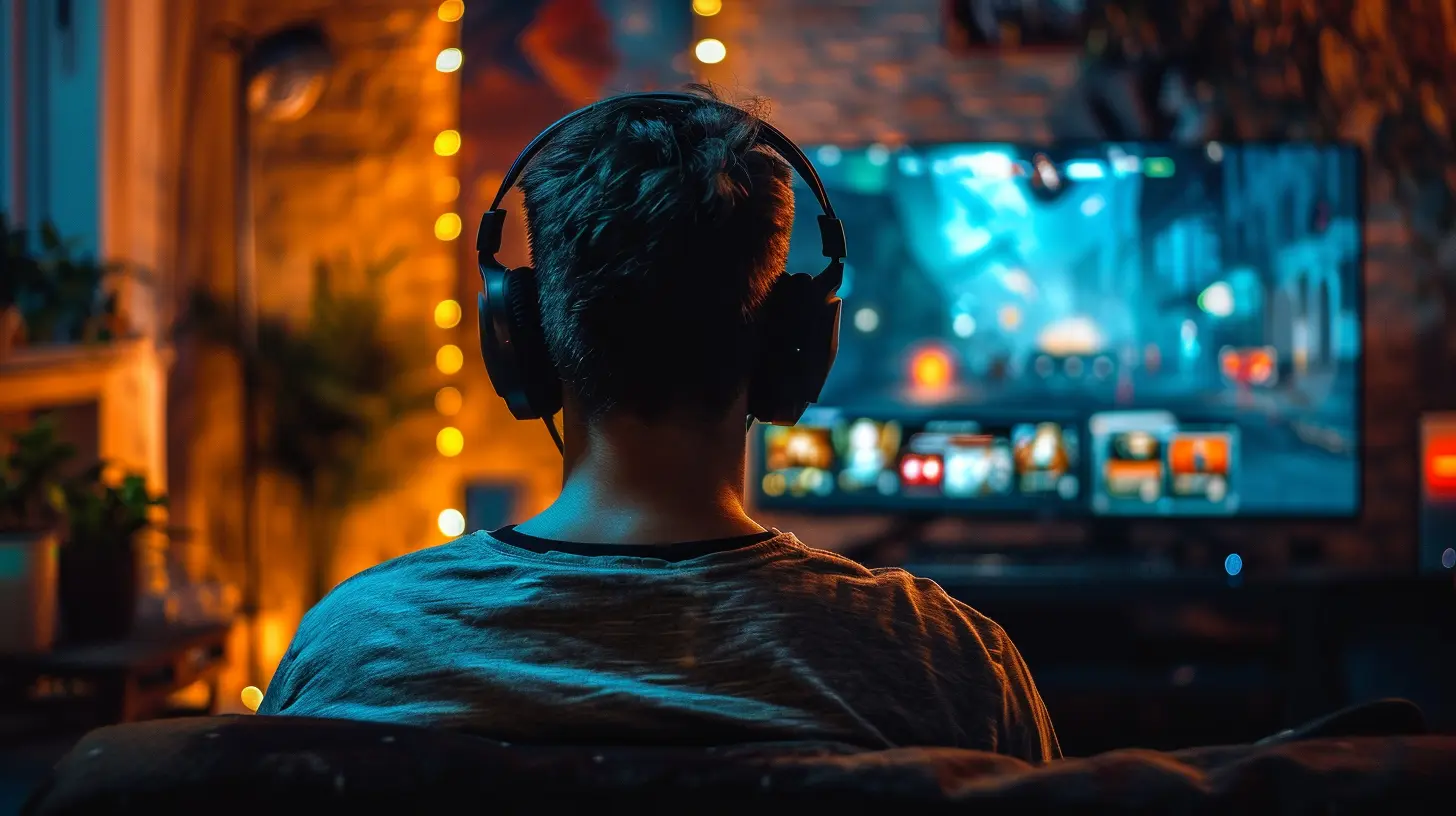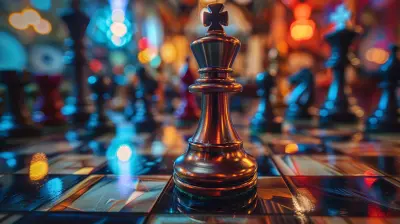The Role of Sound Design in Player Immersion
26 August 2025
Let’s be honest: we all know how good graphics can steal the show. But there's another element that’s just as powerful—if not more—in making a game feel real. Yep, we’re talking about sound design.
Imagine stomping through a post-apocalyptic wasteland with nothing but the echo of your footsteps and a distant howl in the wind. No visuals needed—you’re already in that world, right? That’s the power of sound. It sneaks into our brains and grabs hold of our emotions before we even realize it. So, let’s dive deep into how sound design shapes the gaming experience and pulls us into these digital worlds like a gravitational force.

What Is Sound Design in Games, Anyway?
Before we go all poetic, let’s get on the same page. Sound design in gaming includes anything you hear during gameplay. That covers:- Ambient sounds (rainfall, traffic, birds chirping)
- Sound effects (gunshots, footsteps, rustling bushes)
- Music (background scores and emotional cues)
- Voice acting (character dialogue, NPC chatter)
It’s not just about throwing cool sounds into a game. It’s about crafting a mood, setting the tone, and guiding the player’s emotional journey. Like that ominous music before a boss battle—you feel the tension rising, even if you’re just walking into another room.

Why Sound Is So Crucial In Games
1. Builds Emotional Connection
One of the biggest reasons sound design is so effective is because it hits you right in the feels. Great audio can stir deep emotions. Think back to the gut-punch moment in _The Last of Us_ when music and silence are used together like a conductor pulling your heartstrings. No visuals could capture that raw emotion the same way.Sound creates empathy. It helps you feel what your character feels. Whether it’s fear, joy, or heartbreak—if the audio’s on point, you’re not just playing a game, you’re living it.
2. Enhances Realism
Let’s say you’re walking through a dense jungle. Sure, the trees might look great, but it’s the rustling leaves, the distant animal calls, and the buzzing insects that really sell it. Without those, your brain knows something’s missing.This is where audio acts like invisible glue. It fills in all the sensory gaps and tricks your brain into believing the world is real.
Games like _Red Dead Redemption 2_ and _Horizon Zero Dawn_ absolutely nail this. You can almost smell the digital dirt under your boots because everything sounds so authentic.
3. Guides Gameplay
Sound isn’t just about immersion—it’s also a functional tool. Think of it as your invisible UI. Here’s how sound helps guide you:- Alerts: Incoming enemies? Cue the dramatic sting.
- Objectives: Subtle tones when near a quest item.
- Feedback: The satisfying “ding” when you level up or loot an item.
Ever played a horror game where the sound suddenly stops? That silence is deafening—and often far scarier than any jump scare. Your brain knows something’s about to happen, even before you do.
4. Makes Multiplayer More Intense
In competitive games, sound can mean the difference between victory and defeat. That faint footstep behind you in _Call of Duty_? It’s a matter of life or respawn. Battle royale games like _Fortnite_ and _Apex Legends_ rely heavily on directional audio, letting players locate enemies using only their ears.And let’s not forget about voice chat. Hearing your teammates panic with you during a boss fight or strategize during a raid creates a sense of camaraderie that written text just can’t match.

The Different Layers of Immersive Game Audio
Okay, so sound design is important. But let’s break it down into bite-sized pieces. Here are the key pillars that make it so immersive.Ambient Sounds: Setting the Scene
Ambient sounds are the unsung heroes of immersion. They’re subtle but essential. They craft the world around you and keep you grounded in the environment.Whether you’re exploring a haunted asylum or roaming a busy marketplace, ambient noise gives each location its unique identity. Without it? Everything feels... hollow.
Sound Effects: Bringing Actions to Life
When you press a button, something should happen—and it should sound like it. The clash of swords, the clunk of armor, or even the satisfying squish of a defeated enemy add weight to your actions.Even small sounds like opening a loot box or flipping a switch matter. Sound effects validate your input and make the world feel responsive and alive.
Music: The Emotional Backbone
Don’t underestimate the impact of a good soundtrack. Music carries your journey. It boosts tension, enhances triumph, and deepens despair.Remember those boss fights where the music cranks up and your pulse starts racing? That’s no accident. The score is designed to energize you, sync with the action, and make every moment feel monumental.
Games like _Journey_ and _Ori and the Blind Forest_ are practically emotion delivery systems, thanks to their masterfully done music.
Voice Acting: Giving Characters a Soul
Well-acted dialogue makes characters feel human. It helps the story feel personal and believable. A flat line reading can destroy emotional weight, while a passionate performance can elevate even a simple sentence.Games with top-tier voice work—like _God of War_ or _Mass Effect_—create characters that stay with you long after the credits roll.

The Psychology Behind Sound in Games
There’s actual science to back all this up. Sound taps into the brain’s emotional centers. It bypasses logic and goes straight to the limbic system—the part responsible for feelings. That’s why music can make you cry or give you goosebumps.Here’s the cool part: your brain reacts faster to sound than to images. So in games, audio can be used to hint at danger before you even see it. That’s powerful stuff.
Also, our brains crave context. A silent world feels unnatural, so even minimal sound—like wind or background chatter—can make the environment feel more believable.
Sound Design Challenges in Game Development
Let’s not pretend it’s easy. Sound design is incredibly complex. Here are some of the biggest hurdles audio teams face:- Dynamic Environments: Unlike movies, games are interactive. The sound has to adapt in real-time based on player choices.
- Hardware Limitations: Not all players have surround sound systems. Designers have to make sure audio still works with basic headphones or TV speakers.
- Balance: Too much sound? It’s overwhelming. Too little? It’s empty. Finding the right balance is like walking a tightrope.
Oh, and don’t forget localization. Translating voice acting and syncing it to different languages is a massive challenge on its own.
The Future of Immersive Sound in Games
As tech improves, so does audio. We’re now entering a golden age of spatial audio and 3D soundscapes.With tools like Dolby Atmos and PlayStation’s Tempest 3D AudioTech, it’s possible to hear a bullet whizz by your ear or pinpoint the direction of a whisper. This tech isn’t just flashy—it makes gameplay more intuitive and immersive.
There’s also a growing focus on accessibility. Features like visual cues for important sounds (for deaf or hard-of-hearing players) and customizable audio settings are making games more inclusive than ever.
AI might also play a role in the future, dynamically adjusting sounds based on player actions and emotions. Imagine a horror game that knows when you’re actually scared and cranks the intensity accordingly. Freaky, right?
Best Examples of Sound Design Done Right
Want to hear audio magic in action? Check out these games:- Hellblade: Senua’s Sacrifice – Uses binaural audio to simulate psychosis. You’ll hear voices whispering from every direction. Truly haunting.
- The Legend of Zelda: Breath of the Wild – Minimalist yet powerful sound design that perfectly complements the game’s peaceful exploration.
- DOOM (2016) – A masterclass in heavy metal and demon-slaying. The soundtrack seamlessly reacts to your gameplay intensity.
- Resident Evil Series – Nails the creepy atmosphere. You’ll hear creaks, groans, and whispers that’ll keep you on edge.
Final Thoughts
At the end of the day, sound design isn’t just the icing on the cake—it’s the whole flavor. Without it, games feel flat and lifeless. With it, they become these rich, engaging experiences that suck you in and refuse to let go.If you’ve ever found yourself holding your breath during a tense moment, overwhelmed with emotion in a cutscene, or even just chillin’ in a game world and feeling totally at peace—that’s sound design doing its thing.
So next time you boot up your favorite game, take a moment to really listen. It might just blow your mind how much the audio is doing behind the scenes.
all images in this post were generated using AI tools
Category:
Video Game DesignAuthor:

Whitman Adams
Discussion
rate this article
1 comments
Rosalind Coffey
In the shadows of gameplay, sound weaves its spell. What whispers linger in the air, shaping our fears and dreams? Listen closely...
August 26, 2025 at 2:46 PM

Whitman Adams
Thank you for capturing the essence of sound design! It truly transforms gameplay, drawing players deeper into their experiences and emotions.


